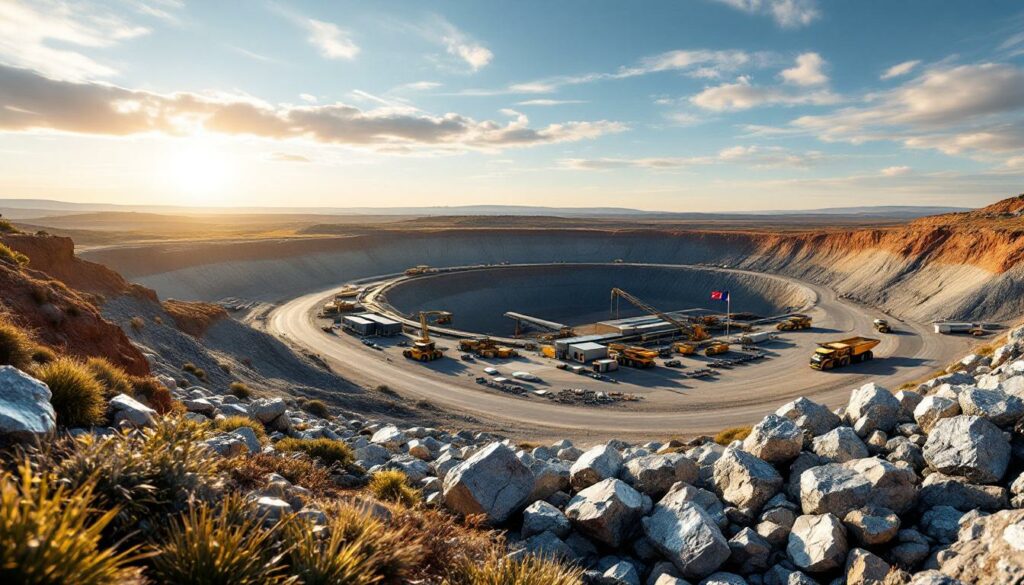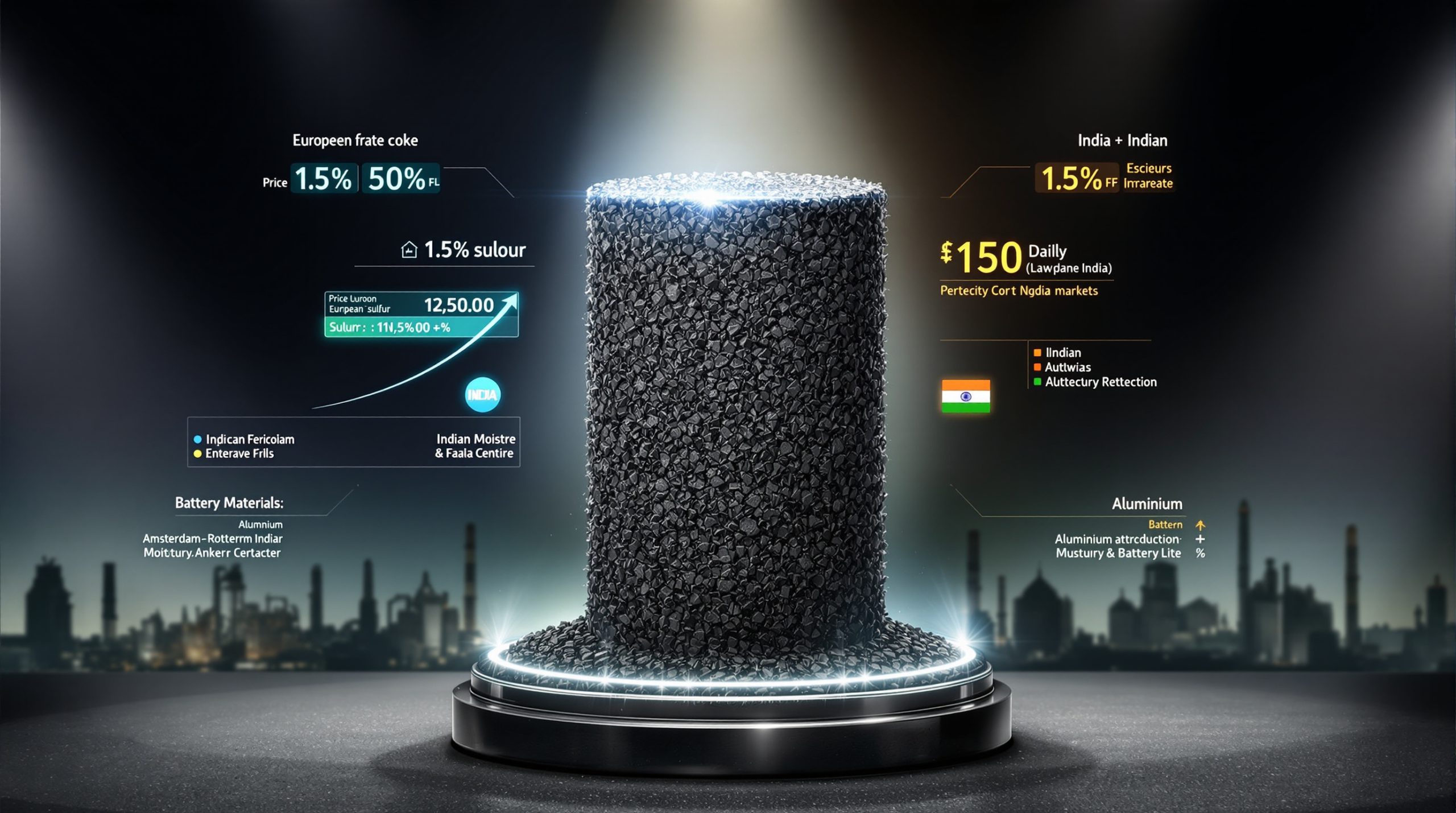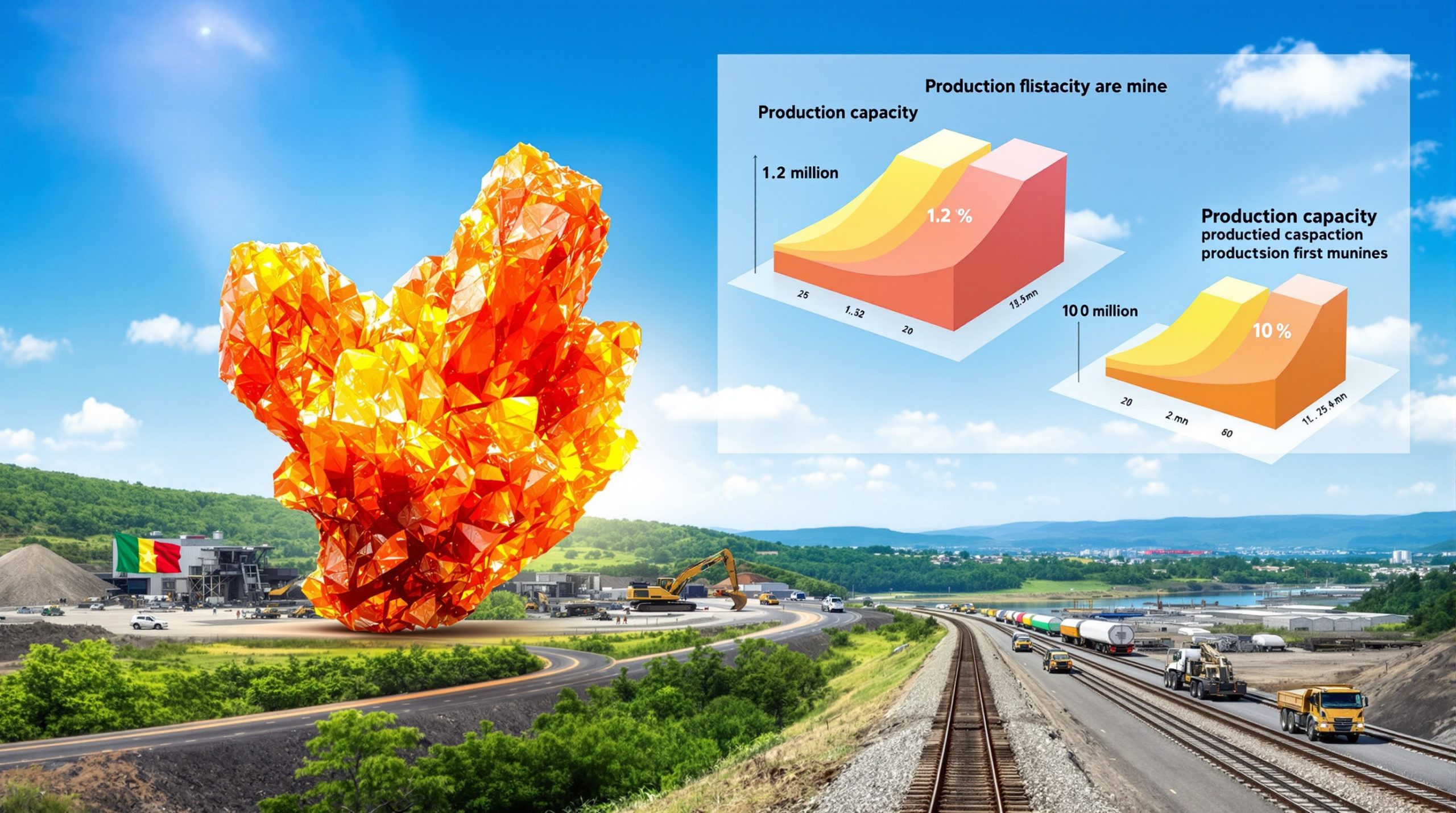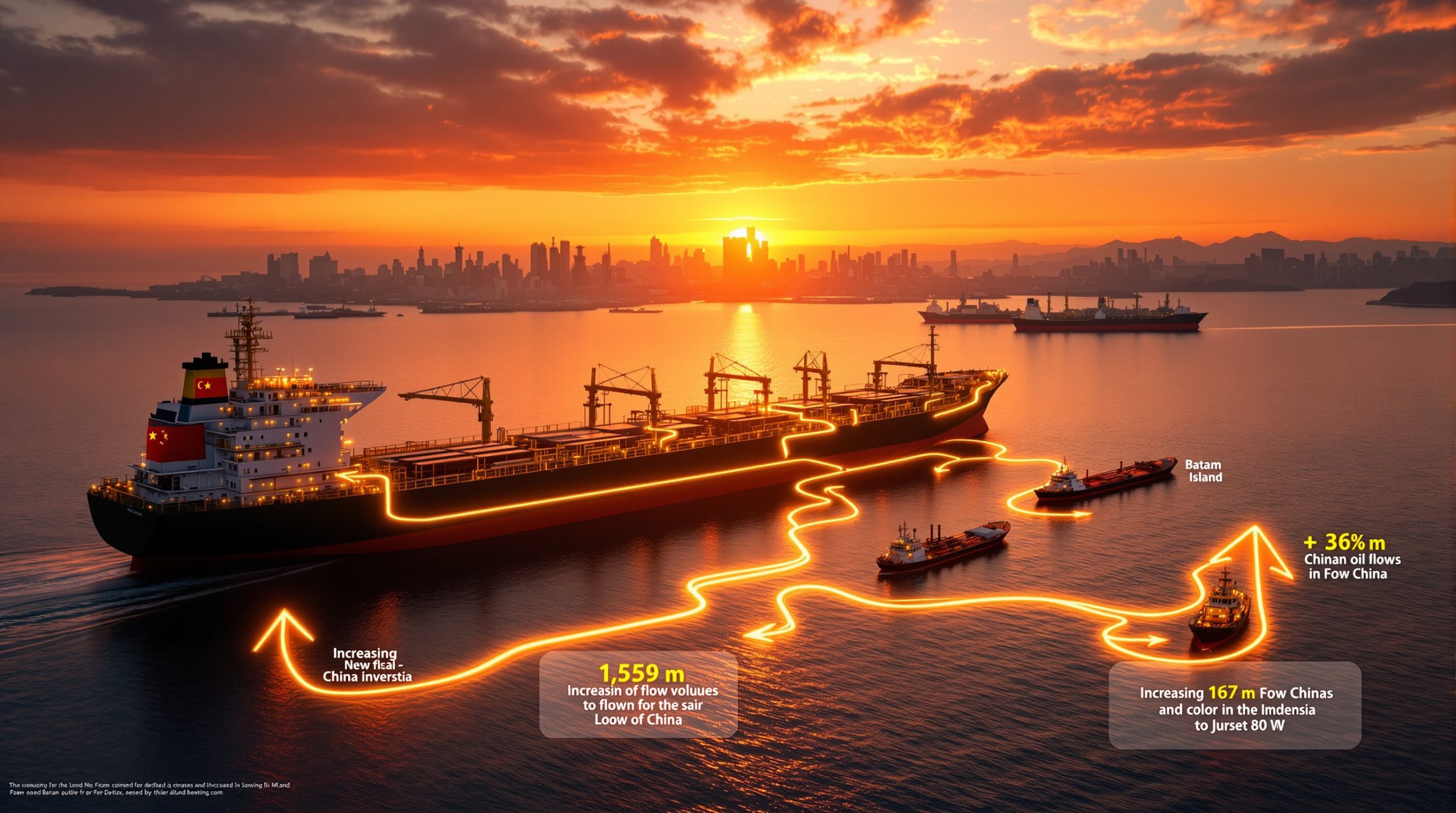Gonneville PGE-Nickel-Copper Project: Chalice Mining's Strategic Development Plan
The Gonneville project represents one of Australia's most promising critical minerals developments, with Chalice Mining advancing a comprehensive strategy to unlock its significant value. Located northeast of Perth in Western Australia, this strategic asset has captured attention for its potential to strengthen both domestic and global supply chains for clean energy technologies.
What is the Gonneville Project?
The Gonneville project is a world-class nickel-copper-platinum group element (PGE) deposit situated approximately 80km northeast of Perth in Western Australia. Owned and operated by Chalice Mining, this discovery represents one of Australia's most significant critical minerals finds in recent years.
The deposit contains substantial resources of nickel, copper, cobalt, and platinum group elements, positioning it as strategically important for both Australia's mineral sector and global clean energy supply chains. With PGEs being essential catalysts in hydrogen fuel cells and nickel properties uses being crucial for electric vehicle batteries, Gonneville's resource profile aligns perfectly with the global energy transition.
What makes Gonneville particularly valuable is its location in a tier-one mining jurisdiction with excellent access to existing infrastructure and proximity to skilled workforce pools – advantages that many competing global projects lack.
How is Chalice Mining Approaching the Gonneville Development?
Two-Stage Development Strategy
Chalice Mining has outlined a sophisticated two-stage development approach for the Gonneville project:
-
Stage 1: Focused on achieving maximum return on investment and rapid capital recovery through a smaller-scale processing operation during the first four years. This initial phase prioritizes higher-grade zones to establish early cash flow.
-
Stage 2: Designed to maximize long-term strategic value by expanding operations from year five onward, with built-in flexibility to navigate metal price fluctuations. This expanded operation will significantly increase throughput capacity.
This phased approach allows Chalice to balance immediate financial returns with long-term value creation while managing capital expenditure efficiently. By sequencing development, the company can also apply operational learnings from Stage 1 to optimize the larger Stage 2 expansion.
"Stage 1 is focused on achieving the highest rate of return and the quickest capital recovery, while Stage 2 is structured to maximise long-term strategic value throughout fluctuations in metal prices."
Processing Capacity and Infrastructure Plans
The development plan includes several key infrastructure components:
-
Processing capacity: Up to 15 million tonnes per annum, as outlined in regulatory referrals submitted in early 2024. This substantial throughput capacity positions Gonneville as a major Australian minerals processing operation.
-
Water supply: Secured through a letter of intent with Water Corporation's Alkimos facility, with plans for pipeline transportation to the site. This sustainable water sourcing solution addresses one of the key challenges for mining operations in Western Australia.
-
Power solutions: Exploration of renewable energy options including a hybrid solar and battery system, complemented by a new 132kV transmission line and long-term power purchase agreements. This approach aims to minimize the project's carbon footprint while ensuring reliable power supply.
These infrastructure investments demonstrate Chalice's commitment to building a world-class operation with strong environmental credentials and operational resilience.
What is the Current Timeline for Gonneville's Development?
Chalice Mining has established a clear timeline for the project's advancement:
-
Pre-feasibility study (PFS): On track for delivery in Q4 2025, which will provide detailed economic assessments and preliminary engineering designs
-
Environmental review documents (ERDs): Draft submission scheduled for mid-2026, representing a major milestone in the regulatory approval process
-
Environmental surveys: Planned for the second half of 2025, focusing on power and water corridors to inform infrastructure development
-
Final investment decision: Expected in late 2027, pending favorable study outcomes and regulatory approvals
The company is maintaining steady progress through these development milestones while engaging with regulatory authorities and stakeholders. This methodical approach reflects the complexity of developing a major minerals project and Chalice's commitment to thorough planning.
Mining analysts note that this timeline is ambitious but achievable, particularly given the strategic importance of critical minerals energy security projects in Australia's current regulatory environment.
How is Chalice Addressing Environmental and Regulatory Requirements?
Environmental Assessment Process
Chalice has initiated comprehensive environmental assessment work for the Gonneville project:
-
Environmental modeling: Commenced following finalization of project scope and site layout, providing baseline data for impact assessments
-
Impact assessments: Being conducted with leading consultancy GHD to support key approvals and identify mitigation strategies for potential environmental impacts
-
Regulatory engagement: Ongoing discussions with state and federal authorities regarding shared infrastructure and potential funding opportunities to accelerate development
This proactive approach to environmental management demonstrates Chalice's commitment to responsible development practices. The company recognizes that robust environmental credentials are not only regulatory requirements but also increasingly important for access to capital and maintaining social license to operate.
Early engagement with regulatory authorities has allowed Chalice to incorporate feedback into project planning, potentially streamlining the approval process and reducing the risk of delays.
What Type of Mine is Planned for Gonneville?
The Gonneville development plan centers around a long-life bulk open-pit mining operation. This approach offers several advantages:
-
Operational efficiency: Enables large-scale extraction of the deposit using conventional mining methods and equipment
-
Resource optimization: Allows for comprehensive recovery of the diverse mineral suite, maximizing the value extracted from the orebody
-
Scalability: Supports the planned expansion from Stage 1 to Stage 2 without requiring fundamentally different mining methods
The open-pit design aligns with the company's staged development strategy while maximizing resource recovery. Modern open-pit mining technologies will be employed to minimize environmental impact and optimize operational efficiency.
Geotechnical studies have confirmed favorable conditions for open-pit mining, with stable rock formations and manageable waste-to-ore ratios across the deposit. This supports the technical feasibility of Chalice's planned mining approach.
What is Chalice's Financial Position for the Gonneville Development?
As of March 31, 2025, Chalice Mining reported a strong financial position:
-
Cash and investments: $83 million in cash and listed investments, providing a solid foundation for continued development activities
-
Funding status: Fully funded through to final investment decision (expected late 2027), allowing for completion of all planned studies and regulatory processes
This financial stability provides Chalice with the necessary resources to advance the Gonneville project through its critical development phases without immediate capital constraints. The company's prudent financial management positions it favorably compared to many junior mining companies that often struggle with funding continuity through extended development timelines.
While the capital expenditure for full project development will require additional financing, Chalice's current funding runway ensures it can maintain development momentum and reach decision points with strong negotiating positions for future capital partnerships.
How Does Gonneville Fit into Australia's Critical Minerals Strategy?
Strategic Significance
The Gonneville project aligns closely with Australia's critical minerals priorities:
-
Resource diversity: Contains multiple critical minerals including nickel, copper, and platinum group elements that are essential for clean energy technologies and defense applications
-
Supply chain security: Potential to strengthen domestic and global supply chains by providing alternatives to concentrated production from regions with geopolitical risks
-
Economic contribution: Will create significant jobs and economic activity in Western Australia, supporting the nation's goal of moving up the value chain in mineral processing
The development represents an important contribution to Australia's position in the global critical minerals landscape. As countries worldwide seek to secure supply chains for energy transition materials, Gonneville offers Australia an opportunity to leverage its geological endowment into strategic industrial advantage.
The project's potential for downstream processing also aligns with national objectives to capture more value domestically rather than simply exporting raw materials – a priority emphasized in Australia's Critical Minerals Strategy.
What Infrastructure Partnerships is Chalice Exploring?
Chalice Mining is actively engaging with government and industry partners on infrastructure development:
-
Government collaboration: Discussions with state and federal authorities regarding shared infrastructure that could benefit multiple projects and communities in the region
-
Funding opportunities: Exploration of potential government support for critical infrastructure components, leveraging the project's alignment with national strategic priorities
-
Industry partnerships: Strategic agreements like the Water Corporation arrangement for water supply, demonstrating Chalice's collaborative approach to addressing infrastructure requirements
These collaborative approaches help optimize capital allocation while ensuring robust infrastructure development. By sharing costs and leveraging existing systems where possible, Chalice can reduce both the financial burden and environmental footprint of new infrastructure development.
The company's engagement with multiple stakeholders reflects a sophisticated understanding that major mining projects require ecosystem thinking rather than standalone development approaches.
FAQs About the Gonneville Project
What metals will be produced at the Gonneville project?
The Gonneville project will produce nickel, copper, cobalt, and platinum group elements (PGEs), all of which are critical for clean energy technologies and industrial applications. These metals play essential roles in:
- Electric vehicle batteries (nickel, copper, cobalt)
- Hydrogen fuel cells (platinum group elements)
- Renewable energy infrastructure (copper)
- Aerospace and defense applications (all of the above)
The diversity of metals provides Chalice with revenue flexibility across different market cycles, as these commodities often follow different price trajectories.
Where exactly is the Gonneville deposit located?
The Gonneville deposit is located approximately 80km northeast of Perth in Western Australia. This strategic location offers several advantages:
- Proximity to infrastructure: Relatively close to existing road, rail, and port facilities
- Workforce access: Within commuting distance of Perth's skilled mining workforce
- Supporting industries: Near Western Australia's well-established mining services sector
- Export pathways: Convenient access to shipping routes to key Asian markets
This location in a tier-one mining jurisdiction significantly reduces logistical challenges compared to many competing global projects in remote or politically unstable regions.
What is the expected lifespan of the Gonneville mine?
While specific lifespan details haven't been finalized, the development plan describes Gonneville as a "long-life" bulk open-pit mine, suggesting an extended operational period. Based on comparable projects and the deposit characteristics:
- Minimum expected life: 15+ years
- Potential with expansions: 20-30+ years
- Contributing factors: Large resource base, staged development approach, and potential for further discoveries
The final mine life will be confirmed in upcoming technical studies, with the pre-feasibility study (due Q4 2025) expected to provide more definitive projections.
How will the project be powered?
Chalice is exploring a comprehensive power strategy that balances reliability, cost-effectiveness, and environmental considerations:
- Renewable component: A hybrid solar and battery solution to reduce carbon footprint
- Grid connection: A new 132kV transmission line to ensure consistent baseload power
- Commercial structure: Long-term power purchase agreements to manage cost risks
This multi-faceted approach reflects the reality that mining operations require reliable 24/7 power while also addressing increasing expectations for reduced carbon emissions. The hybrid solution allows Chalice to optimize both operational and environmental performance.
What is the environmental approval process for the project?
The project requires a structured environmental approval process that includes:
- Environmental review documents (ERDs): Draft submissions planned for mid-2026
- Field surveys: Comprehensive environmental surveys scheduled for H2 2025, focusing on power and water corridors
- Impact assessments: Currently underway with consultancy GHD to identify and mitigate potential environmental impacts
- Stakeholder consultation: Ongoing engagement with local communities, Traditional Owners, and other stakeholders
These regulatory processes are critical path items for the project, with Chalice maintaining proactive engagement with authorities to manage approval timelines effectively.
Further Resources on Australian Critical Minerals Development
For readers interested in exploring related topics, the following resources provide valuable context:
- Chalice Mining's Gonneville project website offers detailed information about the development plans and community engagement
- Mining industry evolution trends that are shaping Australia's resource sector
- Global supply chain dynamics for battery metals and platinum group elements
- Electrification powering mines and how operations like Gonneville are embracing cleaner energy solutions
- Mine reclamation importance and how modern projects integrate closure planning from the outset
- Australian Mining's coverage of Gonneville development provides industry perspective on the project's significance
Understanding these broader contexts helps frame the chalice mining and gonneville development significance within Australia's resource sector and global critical minerals landscape.
Interested in Discovering the Next Chalice Mining Before the Market?
Discover major ASX mineral findings before the crowd with Discovery Alert's proprietary Discovery IQ model, transforming complex data into actionable investment opportunities. Visit our discoveries page to see how significant mineral announcements like Gonneville can create substantial returns for early investors.




